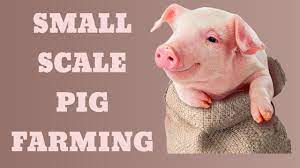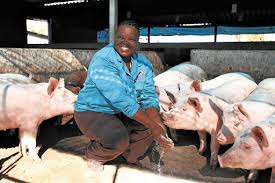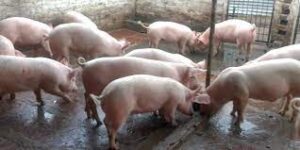HOW TO START PIG FARMING FROM SCRATCH NOW?



A Pig Farmer has 2 options:
- Intensive farming; or
- Free – Range Farming.
Intensive – Pigs are kept in a high-density, closed housing system.
Free Range – Pigs are running in smallish camps, foraging on feed crops such as oats, barley, lucerne and even grass.
Both systems have their advantages and disadvantages, but pig farmers should also consider other factors before taking the plunge.
To breed or not :
Do you plan to breed pigs, or to buy young pigs (weaners) to grow and sell? It better to start with weaners, grow them and sell them a few times before attempting to breed them. You will get to understand pigs better and be better able to develop management protocols. Your management skills should be sound when you start breeding, as this process is far more complicated and difficult than rearing pigs.
Infrastructure
Pigs are strong animals but are easily stressed by factors such s insufficient feed and water, and severe weather if not housed properly. This will decrease productivity, leading to losses. Pigs need solidly built infrastructure including housing, water troughs and fencing.
Feed
- What feed will you use?
- Will it be pigswill or leftovers from restaurants or supermarkets?
- Pigs grow more slowly on a unbalanced diet, or will you feed pigs a commercial balanced pig ration, which is more expensive?
Before buying your first pigs, make sure you can afford to vaccinate and feed them until they are market ready.
Water Availability
Will you have a reliable supply of clean, cool water available? Water is often called the ” forgotten nutrient”, and an unreliable supply can lead to serious loss in productivity, disease and even mortality. A young, growing pig will require at least 10L of water a day while an adult pig can drink 25L – 50L a day.
Genetics
Buy good pigs; never purchase pigs just because they’re cheap. Poorly bred pigs may carry a disease, be genetically inferior or take longer to grow to a marketable size. They may also have poor body conformation or a poor meat-to-fat ratio. The market may not be satisfied with such pork, and this will affect your good name as a supplier.
Other Information
Other factors to consider include:
- providing enough shade in a free range set up ( pigs are susceptible to sunburn).
- access to straw or sawdust for bedding.
- a reliable market for your pigs.
- transport available to take pigs to the market.
- do you see your pig operation as a long-term hobby, or one you plan to grow into a full-time business?
YOU WILL NEED A PROFESSIONAL FARM BUSINESS PLAN TO START CONTACT 084 583 3143 or email us: money@global.co.za
HOW TO START PIG FARMING FROM SCRATCH NOW? Read More »